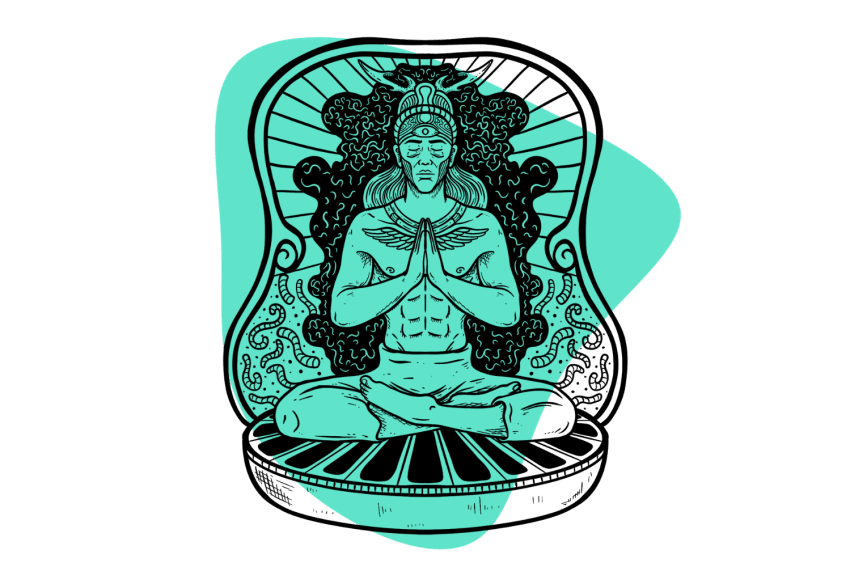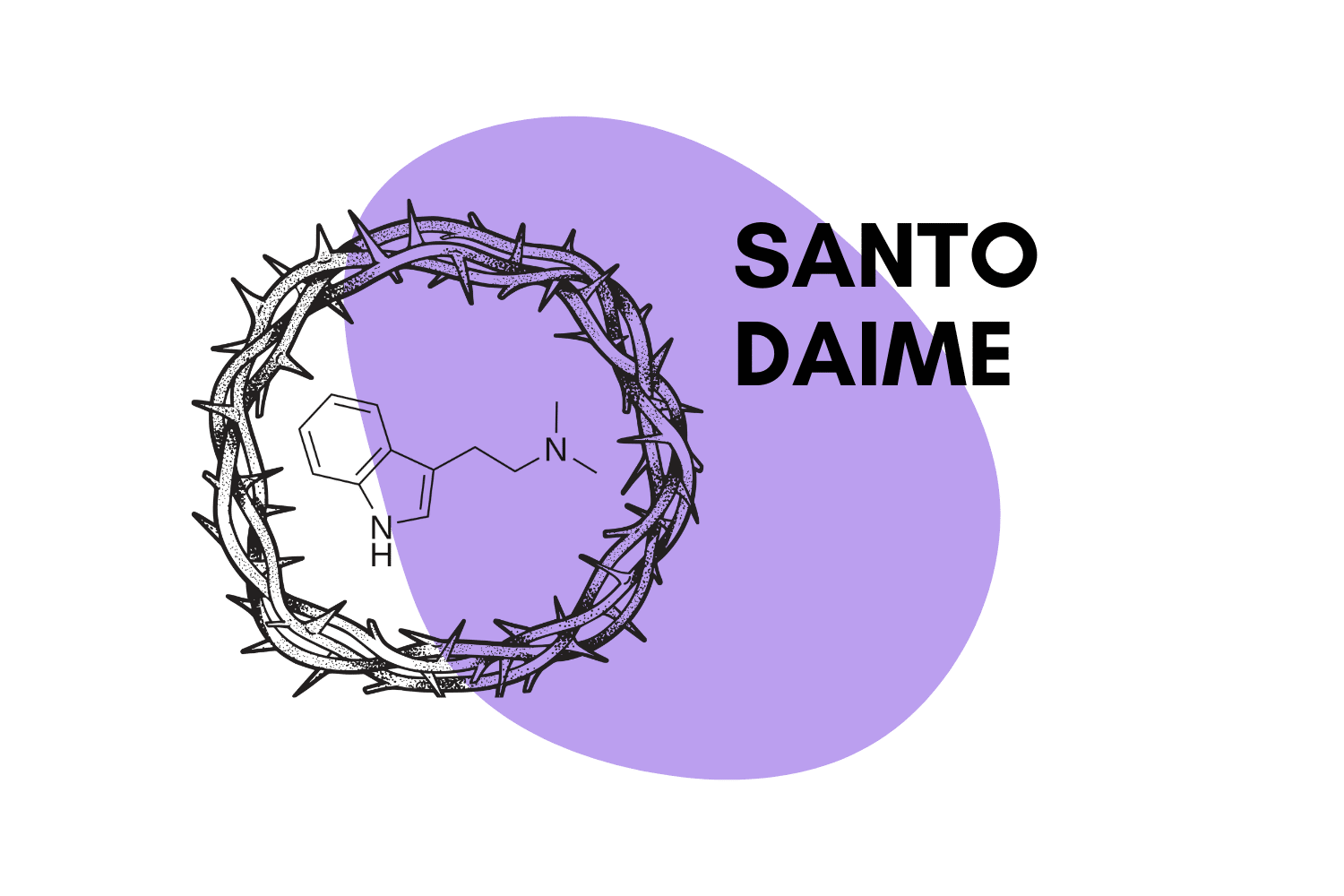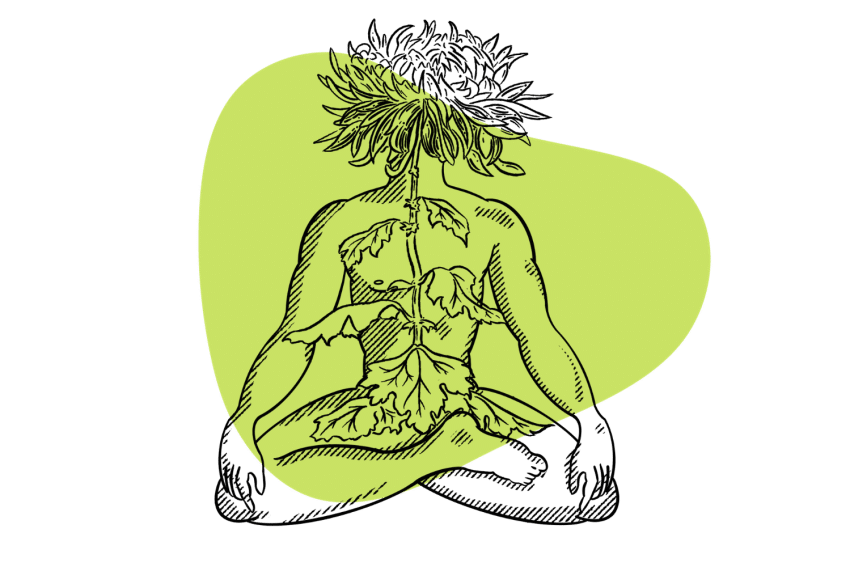A Beginner’s Guide to Kundalini Yoga
Kundalini yoga is a powerful investment in life-force energy. It’s a holistic practice that heals the mind, body, and spirit, and it can even get a little trippy.
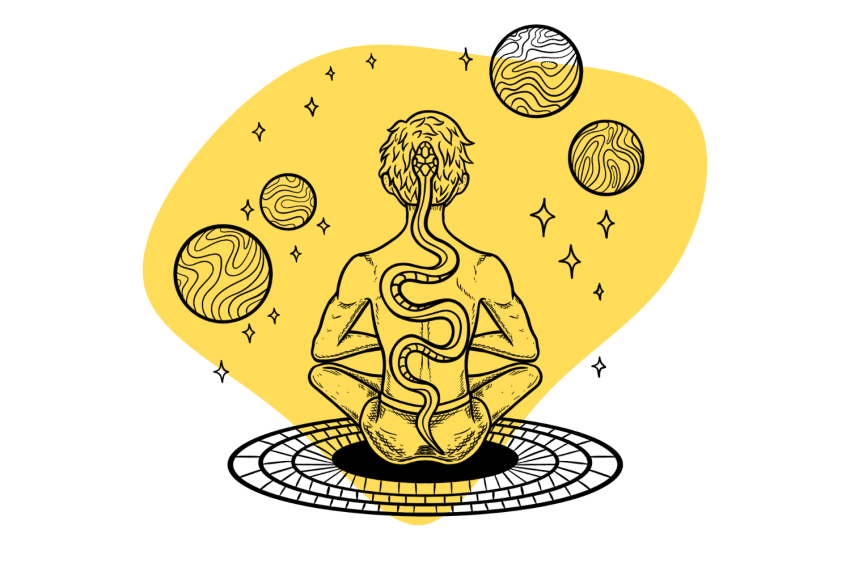
Known as “the mother of all yogas,” Kundalini yoga is not only a tool for physical well-being, it’s also regarded as a “fast tracks to spiritual evolution.”
It goes further than what traditional Westerners consider “yoga,” which is nothing more than a glorified exercise class. Instead, it explores the practice of the union of the mind, body, and spirit through kriya…and it can be pretty trippy at times.
Learn about the origins of Kundalini yoga, how it’s practiced, and the differences between Kundalini and mainstream Westernized yoga.
Let’s begin with the Adi Mantra, as all Kundalini practices do:
The Adi Mantra
Every Kundalini class or kriya begins with the Adi mantra. It’s a way to establish a connection to the oneness of the self and create a direct link to your higher consciousness.
The Adi mantra is as follows:
‘Ong Namo, Guroo Dayv Namo’
You can practice by listening to the Adi Mantra pronunciation.
When rhythmically chanted, the vibrations of the Adi mantra paired with hands in prayer position or gyan mudra are said to connect you to the ‘golden chain.’ The golden chain is the entire lineage of yogis, the history of the Kundalini practice, and the ‘parasamgate‘ the ‘beyond, beyond.’
Here’s how to call in your divine truth and tune into your Kundalini practice with the Adi mantra:
- Sit comfortably, upright, and keep a good posture with the core engaged but relaxed.
- Release tension in the jaw, eyebrows, and cheeks.
- Bring hands together at the heart center, palms touch.
- Loosely focus your eyes forward, gazing at the tip of your nose or the space between the eyebrows.
- With a relaxed breathing pace, chant the Adi mantra slowly three times.
- After the last round, engage your mula bandha, the energetic root lock. You can do this by squeezing your root muscles and genital organs in and up. This bandha is a staple of Kundalini yoga, used to harness and send energy up the spine.
If you’re committed to tuning in, you can follow the Adi mantra with the Aad Gurey Nameh mantra:
‘Aad Guray Nameh. Jugaad Guray Nameh. Sat Guray Nameh. Siri Guru Dayvay Nameh’
Try listening to the pronunciation of the Aad Guray Nameh mantra and follow along with a short kriya.
This mantra can also be chanted three times and serves as a protective field for those who enter the infinite, energetic vortex that is Kundalini. The idea is to imagine a pillar of white light in each direction around you as you chant. Some people like to use this protective mantra before any physically or energetically taxing experience, like (space) traveling or driving.

What Does Kundalini Mean?
Kundalini has been referred to as the energy of consciousness. It’s been explored and developed by mystics in the East for millennia.
The word Kundalini means “coiled” and refers to the energy that resides at the base of the spine. It stores all of the creative potential we carry within us.
Ancient yogic texts, such as The Rig Vedas, The Upanishads, and The Bhagavad Gita, expound on the spiritual benefit of harnessing energy channeled through Kundalini.
Through various exercises and techniques, Kundalini yoga teaches us how to send powerful energy up from our root (base of the spine) to the crown (top of the head) and beyond into the cosmos.
This is the energy of consciousness itself: a creative, life-force energy living within each of us as a (typically) untapped resource of love, development, and expansion.
When trained and harnessed, Kundalini energy can propel you to new heights of growth, alignment, and enlightenment. These benefits could have the power to improve physical health, mental health, and quality of life.

What is Kundalini Yoga?
Patanjali (the father of modern yoga) wisely began the Yoga Sutras (the guiding text of yogic philosophy) with an important phrase: “Now, the exposition of yoga.” This can be roughly understood as “Now, the expression of oneness.” It points to the untouched, original idea of yoga, which is vital to the practice of Kundalini.
Yoga is now a mainstream term; everyone has an idea of what it means, but understanding the origins can deepen your relationship with Kundalini. With commitment and concentration, you can go further into the psychedelics of Kundalini practices, even if you’re new to them.
As you get to the root and uncoil the Kundalini, you begin to see yoga as a union of:
- The mind and the body
- The individual self with the “Divine Self.”
- Stillness with movement
Kundalini is a practice of kriyas, or prescribed sets of poses, repetitive movements, breathwork, and mantras, to hone in on a specific effect. These can often evoke vivid or trippy images for students, even deep within the subconscious.
These ‘hallucinations’ or the psychedelics Kundalini can create happen in a subtle space between the physical and energetic body. In fact, in Kundalini, it’s said that healing is not just happening to the physical or emotional body but rather to The Ten Bodies, made up of the physical body and other subtle bodies.
The idea is that the kriya can help us achieve a particular goal, whether physical, emotional, mental, energetic, or astral. For example, there are kriyas for jumpstarting the endocrine system, removing depression, rejuvenating willpower, amplifying sensation, or connecting with the divine.
In this way, Kundalini can be seen not only as a ‘preventative medicine,’ but also as a way to address maladies (perceived or real) head-on (even if that includes a certain amount of placebo.)
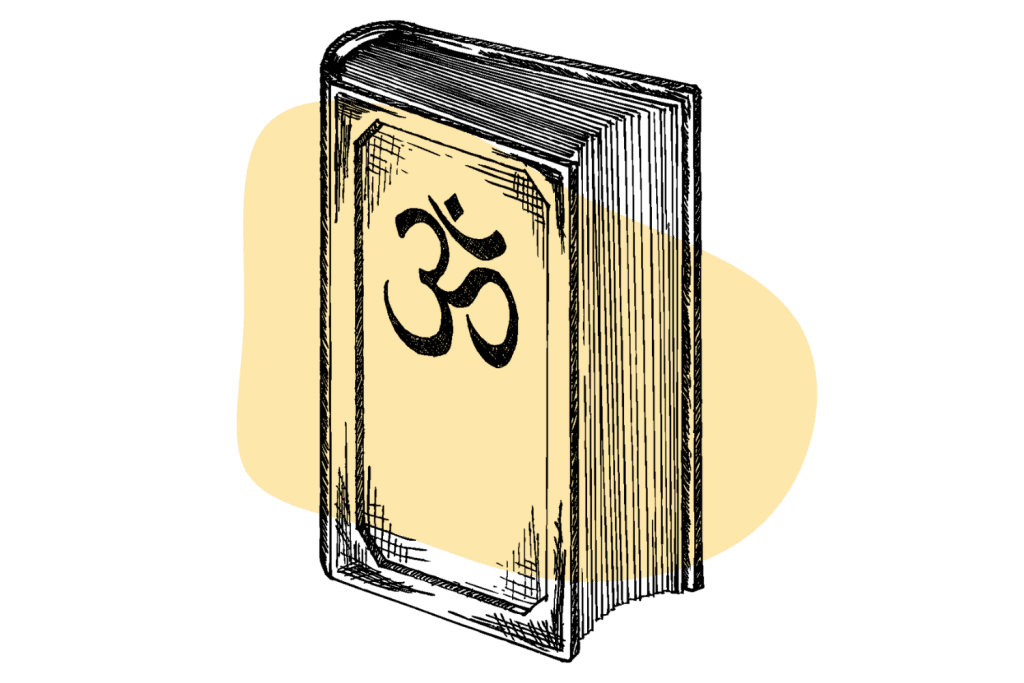
A Brief History of Kundalini Yoga
We can thank Yogi Bhajan, a man of many names, for bringing the ancient practice of Kundalini yoga to the West. A Sikh practitioner, he learned yoga in his native India (present-day Pakistan) from his grandparents and other ancestors.
In the 1960s, Yogi Bhajan traveled west and developed the 3HO (Happy, Healthy, Holy Organization) to share the practice of Kundalini systematically. Today people can still access classes and other information about the practice through the non-profit.
While Yogi Bhajan is credited with bringing Kundalini to the mainstream, he didn’t invent yoga or make up Kundalini yoga. Traditional yoga dates back over 3,500 years to the Indus Valley (also present-day Pakistan) and consisted mainly of meditation practices. So, after all, almost nothing that we describe as ‘yoga’ today can be considered traditional yoga.
How Does Kundalini Differ From Other Types Of Yoga?
Kundalini differs from other yogas in the West for its veracity and deeply spiritual approach.
It focuses largely on meditation and repetitive staccato motions, sounds, and exercises to move energy from the base of the spine up to the top of the head. For example, try this Yoga Tech: Kundalini Yoga Kriya for the Kidneys.
For an observer of a Kundalini class, endurance and intense spiritual and physical discipline are apparent. Compared with a more commonplace hatha or vinyasa yoga class, a Kundalini class may be described as rigorous, intense, and demanding. Other times it’s seen as downright loony… Kunda-loony, that is. These vivid, hallucinatory, trippy moments can feel like quasi-psychedelic Kundalini practices that send students into the astral realm.
Those with developed Kundalini practices often express energetic renewal and strengthened psychosomatic awareness after a session, not just a physical workout.
Kundalini yoga can sharpen the nervous system, heighten body attunement, and support the sense of brain functioning through specifically choreographed movements aligned with powerful breathing techniques. It’s said to help to recalibrate the human being from a cellular level.
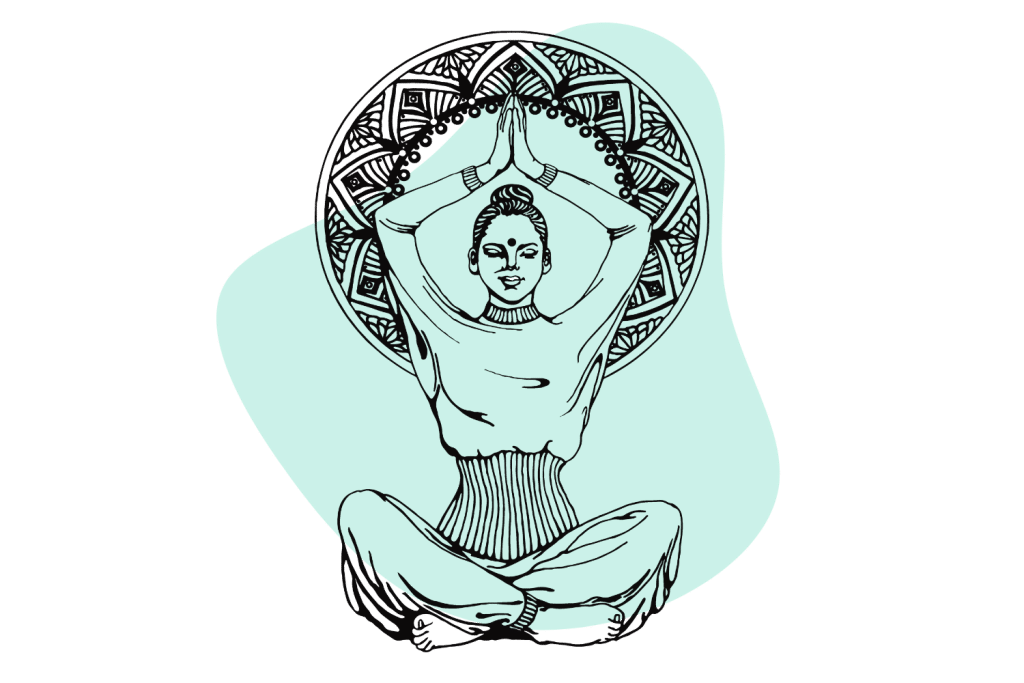
DMT & Kundalini
DMT (N-dimethyltryptamine) is a powerful psychedelic substance found in the brain. Some say that DMT produces visions of kaleidoscopic fractals. Many Kundalini yogis claim to have experienced similar visuals after an energetic yoga practice since using DMT.
But does Kundalini yoga release DMT in the brain?
While science hasn’t yet confirmed the release of DMT through Kundalini, the two may have a relationship, even if it’s a subtle one.
Kundalini impacts the nadis, or a highway of tens of thousands of subtle energetic channels of the body. The three main nadis, Sushumna (the central channel) and Ida and Pingala (the left and right channel) may be connected with the major hemispheres of the brain or important glands like the hypothalamus, pineal, or pituitary.
So, although there’s no empirical evidence indicating that DMT and Kundalini yoga are related, the Kundalini high that many students feel after a kriya could be more than just endorphins.
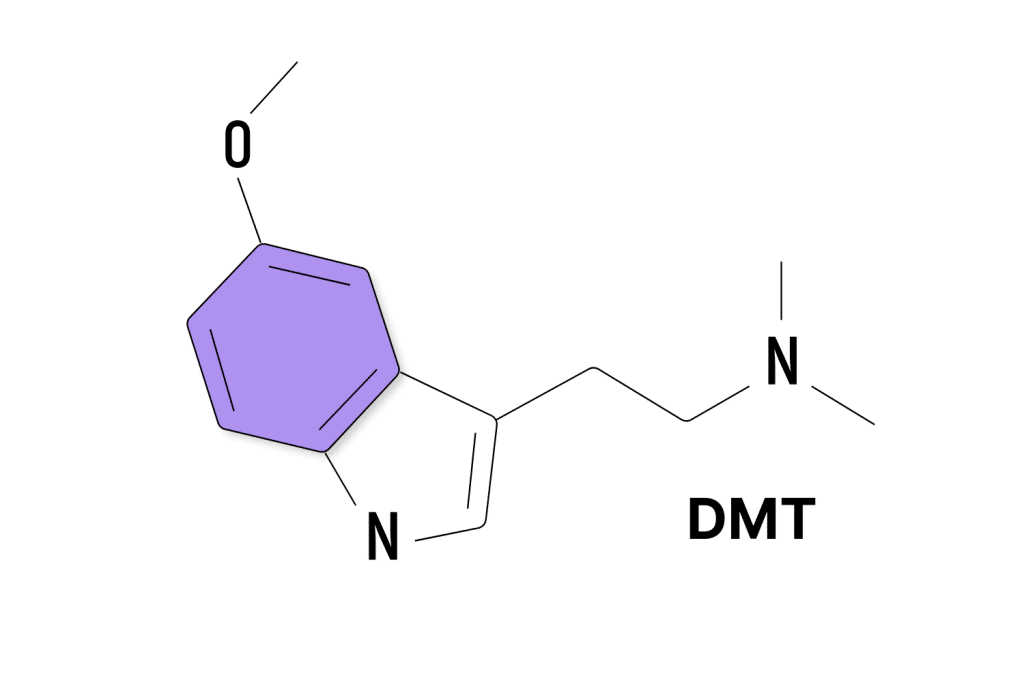
The 8 Limbs Of Kundalini
To fully understand Kundalini, we must dive into the eight limbs of yoga. The eight limbs are part of Patanjali’s exposition of the philosophy of yoga. They each highlight a different facet of the science of yoga [1].
The limbs of yoga begin with a focus on our external relationship with the world and ourselves. With each progressive limb, the focus becomes more subtle and turns more deeply inward (and upward toward the crown of the head). This represents ascension to our highest spiritual nature and existence. This is the unraveling of the serpent or your “coiled” Kundalini energy.
1. Yamas: The Five Restraints Of Yoga
These are moral imperatives or worldly disciplines to be incorporated into your life. They guide us away from those things which tarnish our fortitude on the path of evolution.
The Yamas contribute to a person’s overall self-development and growth and include:
- Ahimsa — abstaining from self-harm and harm to others
- Satya — truthfulness
- Asteya — non-stealing
- Brahmacharya — pureness, celibacy, and chastity
- Aparigraha — non-possessiveness and the ability to release feelings of greed or jealousy
2. Niyamas: The Five Observances Of Yoga
As a parallel practice with the Yamas, or things we want to avoid, the Niyamas are practices to adopt and develop with discipline. This is the mental work and self-mind-training aspect of yogic philosophy.
- Saucha — maintenance of a clear and pure mind, cleanliness
- Santosha — contentment within one’s self and acceptance of others
- Tapas — self-discipline and perseverance
- Svadhyaya — self-reflection and introspection, self-study
- Ishvarapranidhana — dedication to a “god” or “master,” or a teacher or Guru that helps the student tap into their higher power
3. Asana: “Posture” Or “Pose”
This is the configuration and alignment of the physical body and mind, aligned with breath. The asanas are what people normally associate with “yoga,” but in reality, this is just one of the 8 limbs.
4. Pranayama: Breathwork
(Prana=“life-force”, and ayama=“stretching”)
Breathing techniques using specific patterns of inhalations and exhalations help the practitioner to focus, clear the mind, and calm the body.
5. Pratyahara: Mastery Of the Senses
Involving drawing awareness inward, encouraging a withdrawal from the senses, and full focus on the inner world. Oftentimes the breath serves as an anchor point to the here and now. Pratyahara trains the mind to be settled, leaving worldly disturbances behind. With a settled mind, we are better able to navigate our truest path.
6. Dharana: One-Pointed Concentration
The goal here is to tie your awareness to a single point, whether that be a sound, object, breath, or idea.
7. Dhyana: Focus On Deep Meditation
Achieve a contemplation deep enough to eliminate all external distractions and experience pure awareness with no judgment or thought about it.
8. Samadhi: Absorption Into Spirit Or Unity Consciousness
The deep knowing and feeling that you are one with all. Samadhi incorporates all the limbs of yoga to merge into enlightened existence.
As you master each limb and ascend this spiritual ladder of experience, the teachings become more and more subtle. It’s often said that as you proceed on your spiritual path and clear your body and mind, you garner yogic superhuman powers called siddhis. These powers may be considered hallucinations to non-practitioners, but those who have experienced the psychedelic effects of Kundalini can probably relate to the sensation.
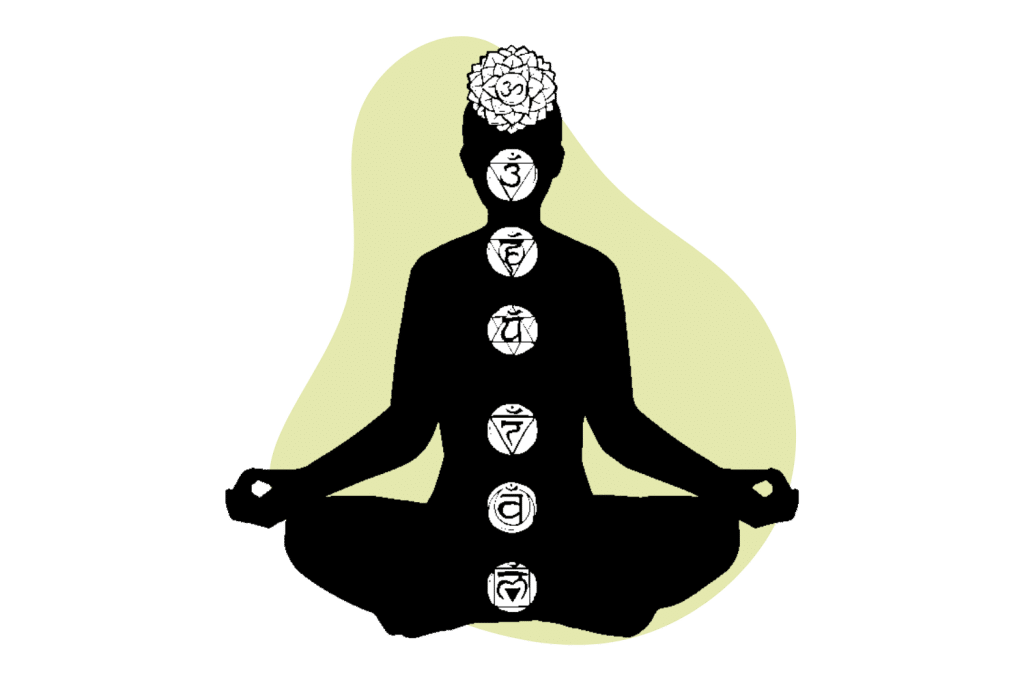
How Is Kundalini Practiced?
A Kundalini practice starts with tuning in by chanting the Adi mantra. From there, a brief warm-up of the spine and the nadis. Next, students follow a prescribed series of poses and breathing techniques called kriyas. Kriyas help students move deeper into practice and propel spiritual evolution.
After the kriya is complete, students are advised to take a long savasana or rest period. This resting time is a mini death of the ego and a moment to recalibrate. It’s a Kundalini yoga DMT-like experience since, during the rest period, the mind explores colors, images, sensations, and beyond.
Yogi Bhajan often instructs students to ‘try to go to sleep’ during savasana. This allows the conscious mind to shut down and the benefits of the practice to seep into the subconscious.
Some yogis describe reconnecting to forgotten dream spaces, deep-rooted memories, or other visual and sensory memories during savasana. In this way, Kundalini could be a tool to help address deep seeded wounding and trauma.
Many practitioners and teachers of Kundalini suggest committing to a particular kriya for many days in a row, anywhere from 8 days, to 40 days, to 108 days. This could be an attempt to integrate subconscious change at the cellular level and adopt a new habit in the physical realm.
What Is A Kriya?
In Kundalini yoga, specific sets of postures, or series, are known as kriyas.
Each kriya is designed to target an area or system within the body, mind, or spirit and produce particular effects.
Nauli kriya, for example, is a short kriya, effective in generating movement of prana in the body and for improving digestion. It’s often performed at the beginning of a longer Kundalini practice to prepare the body and generate heat.
The following techniques are used during kriyas:
- Meditation
- Asanas (yoga postures)
- Pranayam (breathwork)
- Yogic locks (bandhas)
- Sacred sound (chanting mantras)
- Rhythm
- Music
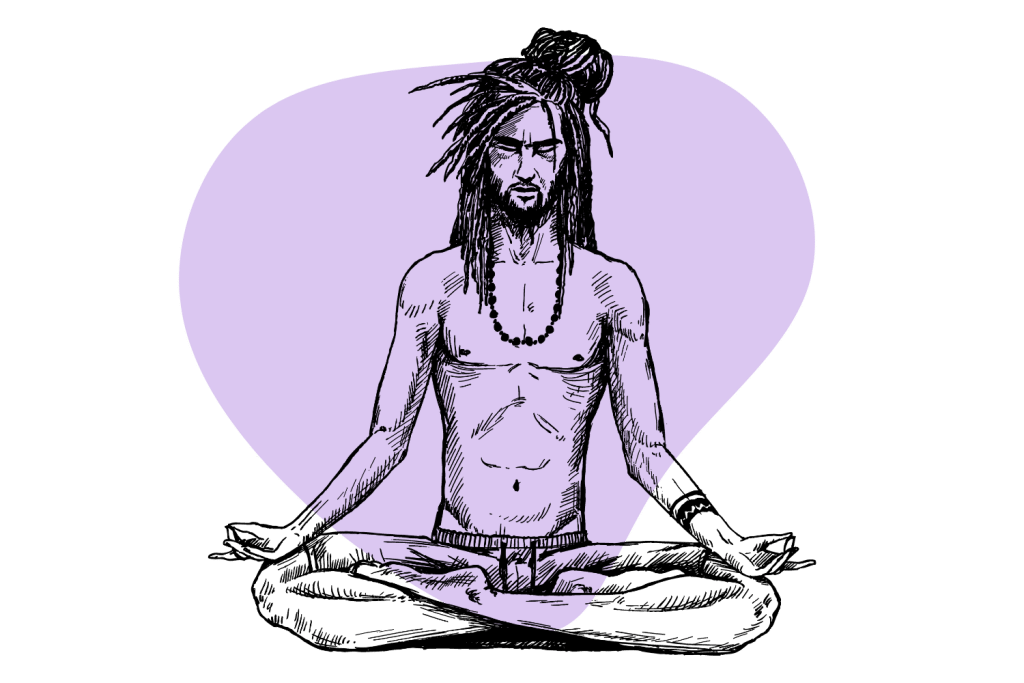
What Are the Benefits Of Kundalini Yoga?
Kundalini yoga is a technology. It’s used for nurturing the potential that lies within so you can blossom. By practicing consistently, you’ll begin to unlock and gain nearer access to robust expansion and your fullest potential.
According to modern research, Kundalini contributes to overall improved physical health [2] and cognitive function [3]. It’s also used to enhance self-perception and self-awareness.
Incorporating a yoga practice into your daily regimen is a way of managing and pruning your inner landscape, which directly affects how you interact with and react to the outer world. Like in landscaping, the grass always grows back, but regular care and maintenance keep things clean and manageable —this is how your mind works, too.
1. Mental Benefits Of Kundalini Yoga
Through the practice of Kundalini, you can experience clarity and focus, a deeper connection in relationships, and have an easier time releasing old traumas and patterns.
Here are a few of the other cognitive benefits that practitioners of Kundalini yoga experience:
- Increased brain power, creativity, mood, memory, and focus [4]
- Decreased negative feelings like depression and anxiety [2]
- Increased emotional regulation [3]
Kundalini techniques have also proven useful in treating a wide array of anxiety disorders, including OCD [5].
2. Physical Benefits Of Kundalini Yoga
The physical benefits of Kundalini are extensive and include [2]:
- Increased vitality and physical health
- Strength building; asanas build muscle tone through the development of long muscle fiber tissue; think “core strength”
- Stress and anxiety relief through the toning of parasympathetic and vagal systems and reduction of cortisol levels
- Promotion of prolactin and oxytocin release, which fosters calmness, friendship, and bonding with others
- Lowered heart rate and blood pressure
- Boosted metabolism and digestion
- Regulation of blood glucose levels
- Sleep support
In a study on insomniac patients, over 50% of participants who received a yoga-based treatment showed a lessening in the severity of their insomnia [6].
Kundalini yoga practice, in whatever form that takes for you, can be of immense benefit to your well-being. Yoga for kids and in pediatric settings is even recommended and used around the world [2].
3. The Spiritual Benefits Of Kundalini Yoga
Spiritual development is a key benefit of the Kundalini practice. Self-development is a byproduct of the Kundalini process; the ability to generate more abundance and access imagination, creativity, inspiration, and joy.
A few common developments in spiritual life through Kundalini yoga practice include:
- Boosted self-perception
- More willpower
- Cultivation of an “all-embracing” attitude and perspective, being open to whatever life brings, ready to conquer with love.
- More compassionate communication
- Awakening of your intuition
- Ability to make wiser, more intentional decisions from a collectivist perspective rather than ego
- Spiritual enlightenment, a more blissful sense of reality
Some students of Kundalini yoga report that the effects of DMT and Kundalini offer a similar quality of spiritual transcendence. Many refer to DMT as The Spirit Molecule, and given the psychedelic sensation produced by a Kundalini practice, it’s no wonder that people compare the two.

Is Kundalini Yoga Safe?
Kundalini is safe if you practice with care and follow instructions and guidance. Like anything else, if you push yourself too far, you may have adverse results.
Some postures or techniques are not recommended for those who are pregnant, susceptible to seizure, have heart conditions, or have other serious health concerns.
Some of the breathing techniques in Kundalini yoga, like the staple breathing technique kapalabhati (breath of fire), can be intense and disorienting for new practitioners. Start slow, and build up your practices of the intense breathing techniques and postures over time.
The good news is that almost anyone can practice a simple, alternate nostril breathing technique or meditation. Go slow with your Kundalini journey and pace yourself. Kundalini has the power to transform you if you’re kind to yourself along the way (remember, non-harming).
How To Do Kundalini Yoga At Home
To do Kundalini at home, you should get familiar with some key concepts and types of practices you’ll be doing.
Research kriyas and find classes and centers that focus on the following:
- Breathwork — Breath of fire is the default breathing technique for most Kundalini kriyas.
- Mantras — Start with So Hum. Repeat the phrase So as you inhale and Hum as you exhale.
- Kriyas — If you’re new to Kundalini, it’s a good idea to practice kriyas under the guidance of a teacher or alongside a video.
- Mudras — Use certain hand positions to tune into specific healing and elevating vibrations.
- Kundalini meditations — In Kundalini, meditations are usually long-held postures associated with a mantra and breathing pattern.
The Sat Nam Mantra
The Sat Nam mantra closes the Kundalini practice and brings us back to our earthly state of being, grounded in our physical body. It is a “seed mantra” made up of basic Sanskrit syllables.
But don’t be fooled by the idea of a tiny seed; the Sat Nam mantra encompasses huge energy with explosive potential and the power to change perception. Translated to “truth is my identity,” the vibrational resonance of these Sanskrit words can tune your frequency.
When chanted at the end of your practice, Sat Nam can help you access your Highest truth and seal it into your psyche.

Kundalini Yoga Is For Everybody
Kundalini yoga is an ancient practice rooted in the history of the great yogis of old. In the 1960s, Yogi Bhajan brought the Kundalini yoga practice west. Since then, Kundalini has helped people shift mind, body, and spirit, bringing the life force up from the root to the crown and beyond into the boundless universe.
Although Kundalini shares some common ground with modern Western yoga practices, like postures and breathwork, the practice of Kundalini is often considered more intense and energetically awakening. Forceful, repetitive movements are synchronized with mantra and powerful breathing to awaken and ignite the coiled serpent at the base of the spine. The trippy sensations and ‘psychedelics’ of Kundalini aren’t hard to find for anyone willing to try out the ancient practice.
Yogis can practice the eight limbs of yoga alongside Kundalini kriyas to further spiritual development and find renewed energy in the everyday.
Ready to start your practice? The Kundalini elevator is open for everyone who wishes to tune in and tune up. Just roll out your mat and begin!
References
- Schmid, A., Sternke, E., Do, A.-N., Conner, N., Starnino, V., & Davis, L. (2021). The eight limbs of yoga can be maintained in a veteran-friendly yoga program. International Journal of Yoga, 14(2), 127. https://doi.org/10.4103/ijoy.IJOY_106_20
- Stephens, I. (2017). Medical Yoga Therapy. Children, 4(2), 12. https://doi.org/10.3390/children4020012
- McMahon, K., Berger, M., Khalsa, K. K., Harden, E., & Khalsa, S. B. S. (2021). A Non-randomized Trial of Kundalini Yoga for Emotion Regulation within an After-school Program for Adolescents. Journal of Child and Family Studies, 30(3), 711–722. https://doi.org/10.1007/s10826-021-01911-9
- Khalsa, D. S., & Newberg, A. B. (2021). Spiritual Fitness: A New Dimension in Alzheimer’s Disease Prevention. Journal of Alzheimer’s Disease, 80(2), 505–519. https://doi.org/10.3233/JAD-201433
- Shannahoff-Khalsa, D. S. (2004). An Introduction to Kundalini Yoga Meditation Techniques That Are Specific for the Treatment of Psychiatric Disorders. The Journal of Alternative and Complementary Medicine, 10(1), 91–101. https://doi.org/10.1089/107555304322849011
- Khalsa, S. B. S., & Goldstein, M. R. (2021). Treatment of chronic primary sleep onset insomnia with Kundalini yoga: A randomized controlled trial with active sleep hygiene comparison. Journal of Clinical Sleep Medicine, 17(9), 1841–1852. https://doi.org/10.5664/jcsm.9320


